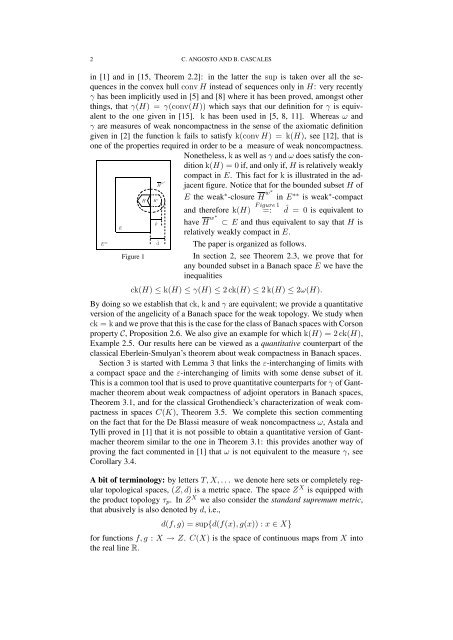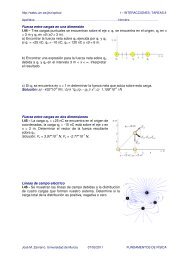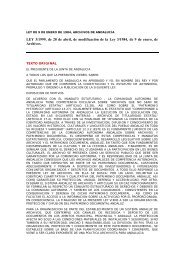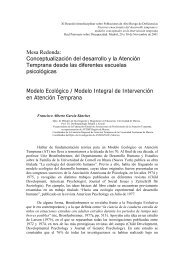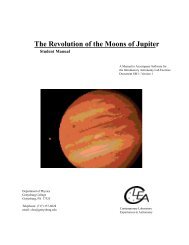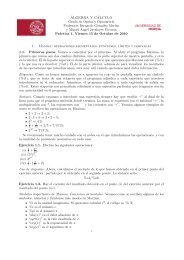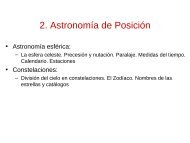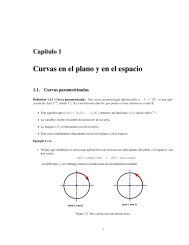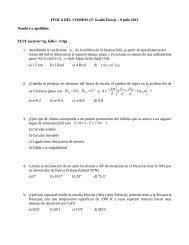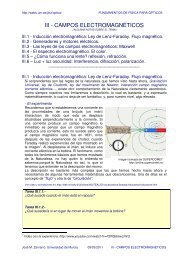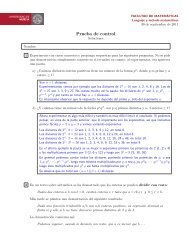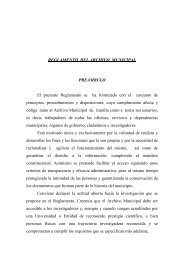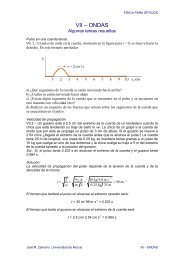MEASURES OF WEAK NONCOMPACTNESS IN BANACH SPACES ...
MEASURES OF WEAK NONCOMPACTNESS IN BANACH SPACES ...
MEASURES OF WEAK NONCOMPACTNESS IN BANACH SPACES ...
You also want an ePaper? Increase the reach of your titles
YUMPU automatically turns print PDFs into web optimized ePapers that Google loves.
2 C. ANGOSTO AND B. CASCALES<br />
in [1] and in [15, Theorem 2.2]: in the latter the sup is taken over all the sequences<br />
in the convex hull conv H instead of sequences only in H: very recently<br />
γ has been implicitly used in [5] and [8] where it has been proved, amongst other<br />
things, that γ(H) = γ(conv(H)) which says that our definition for γ is equivalent<br />
to the one given in [15]. k has been used in [5, 8, 11]. Whereas ω and<br />
γ are measures of weak noncompactness in the sense of the axiomatic definition<br />
given in [2] the function k fails to satisfy k(conv H) = k(H), see [12], that is<br />
one of the properties required in order to be a measure of weak noncompactness.<br />
Nonetheless, k as well as γ and ω does satisfy the condition<br />
k(H) = 0 if, and only if, H is relatively weakly<br />
compact in E. This fact for k is illustrated in the adjacent<br />
figure. Notice that for the bounded subset H of<br />
H w∗<br />
E the weak ∗ -closure H w∗<br />
in E ∗∗ is weak ∗ -compact<br />
H H c<br />
and therefore k(H) F igure =: 1 ˆd = 0 is equivalent to<br />
✛ ✲<br />
ˆρ have H w∗<br />
⊂ E and thus equivalent to say that H is<br />
E<br />
relatively weakly compact in E.<br />
E ∗∗<br />
Figure 1<br />
✛ ✲<br />
ˆd<br />
The paper is organized as follows.<br />
In section 2, see Theorem 2.3, we prove that for<br />
any bounded subset in a Banach space E we have the<br />
inequalities<br />
ck(H) ≤ k(H) ≤ γ(H) ≤ 2 ck(H) ≤ 2 k(H) ≤ 2ω(H).<br />
By doing so we establish that ck, k and γ are equivalent; we provide a quantitative<br />
version of the angelicity of a Banach space for the weak topology. We study when<br />
ck = k and we prove that this is the case for the class of Banach spaces with Corson<br />
property C, Proposition 2.6. We also give an example for which k(H) = 2 ck(H),<br />
Example 2.5. Our results here can be viewed as a quantitative counterpart of the<br />
classical Eberlein-Smulyan’s theorem about weak compactness in Banach spaces.<br />
Section 3 is started with Lemma 3 that links the ε-interchanging of limits with<br />
a compact space and the ε-interchanging of limits with some dense subset of it.<br />
This is a common tool that is used to prove quantitative counterparts for γ of Gantmacher<br />
theorem about weak compactness of adjoint operators in Banach spaces,<br />
Theorem 3.1, and for the classical Grothendieck’s characterization of weak compactness<br />
in spaces C(K), Theorem 3.5. We complete this section commenting<br />
on the fact that for the De Blassi measure of weak noncompactness ω, Astala and<br />
Tylli proved in [1] that it is not possible to obtain a quantitative version of Gantmacher<br />
theorem similar to the one in Theorem 3.1: this provides another way of<br />
proving the fact commented in [1] that ω is not equivalent to the measure γ, see<br />
Corollary 3.4.<br />
A bit of terminology: by letters T, X, . . . we denote here sets or completely regular<br />
topological spaces, (Z, d) is a metric space. The space Z X is equipped with<br />
the product topology τ p . In Z X we also consider the standard supremum metric,<br />
that abusively is also denoted by d, i.e.,<br />
d(f, g) = sup{d(f(x), g(x)) : x ∈ X}<br />
for functions f, g : X → Z. C(X) is the space of continuous maps from X into<br />
the real line R.


